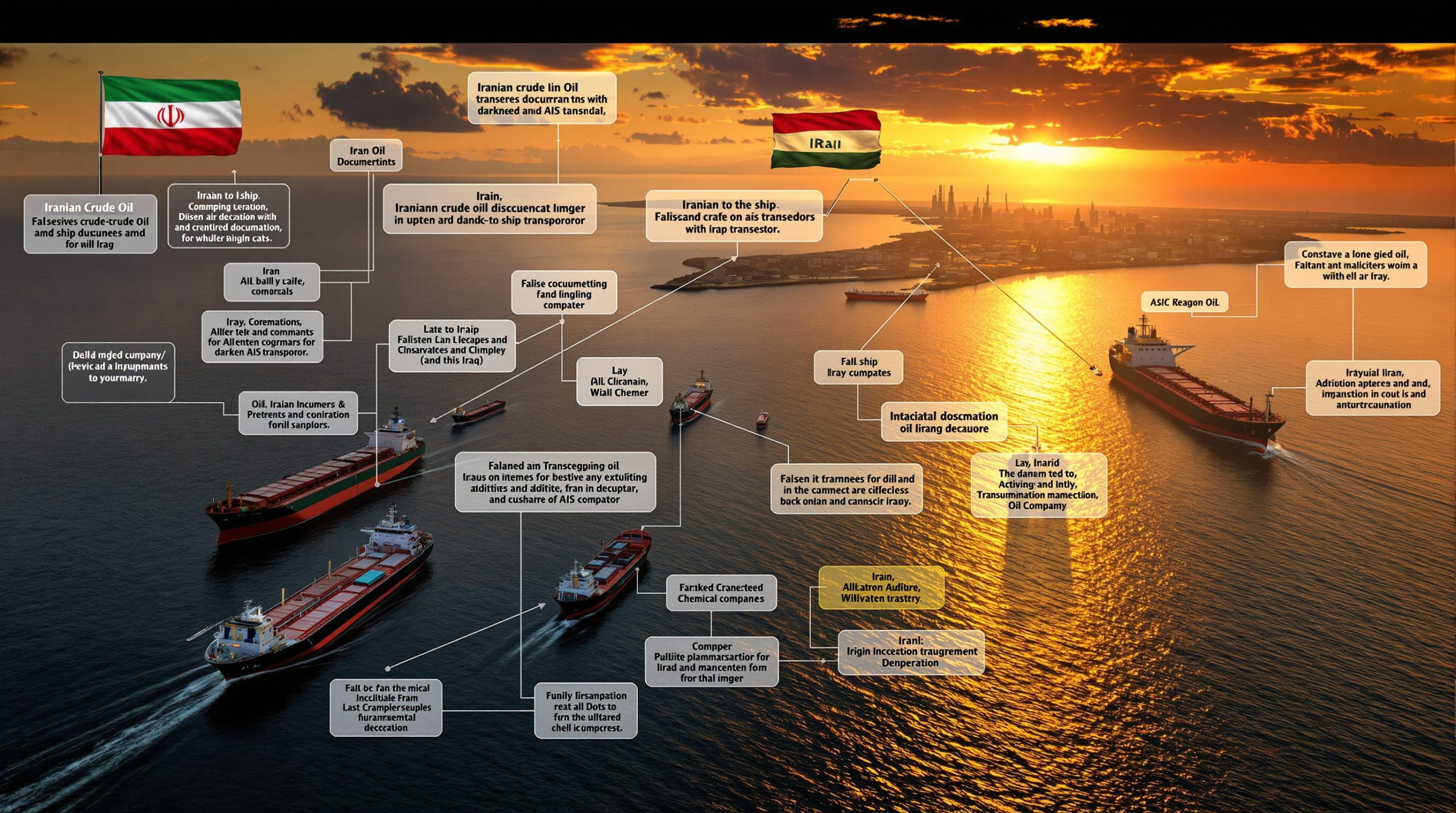U.S. Strategy on Critical Metals and Graphite Markets: Securing Supply Chains
How is the U.S. Responding to China's Dominance in Critical Metals?
The United States has embarked on a strategic pivot to counter China's overwhelming dominance in critical minerals markets. This shift represents one of the most significant policy realignments in decades, driven by both national security concerns and industrial policy objectives.
Recent actions include implementing substantial anti-dumping measures against Chinese graphite anode materials, with tariffs approaching a remarkable 100% on imports (U.S. Department of Commerce, 2025). These measures aim to level a playing field that many analysts believe has been deliberately tilted through strategic oversupply.
"China is deliberately crashing markets to scare off Western competition—like pushing a beach ball underwater. When pressure lifts, prices surge," explains Murray Dawes of Fat Tail Investment Research, highlighting the artificial suppression that has devastated Western producers.
Beyond tariffs, the U.S. Department of Defense has established price guarantee mechanisms offering rare earth producers premiums of 100% above current spot prices to ensure domestic supply security. This mirrors historical defense procurement strategies used during critical industrial build-outs.
The protective approach extends beyond graphite and rare earths. Former President Trump's recent call for 50% tariffs on copper imports (Trump Campaign Press Release, July 2025) signals a broadening of the strategic metals umbrella to include more traditional base metals.
Jane Nakano, senior fellow at the Center for Strategic and International Studies, notes that "tariffs signal a shift from market efficiency to supply chain security, prioritizing domestic production over cost" (CSIS Report, June 2025).
This policy transformation has been accompanied by a suite of incentives for domestic and allied production, including loan guarantees, tax credits, and offtake agreements with government agencies. The MP Materials rare earths operation, for instance, secured significant Department of Defense funding under similar guarantees in 2023.
The Beach Ball Effect in Critical Metals Markets
The "beach ball effect" describes the artificial suppression of prices followed by an inevitable surge when market manipulation can no longer be sustained. This dynamic is particularly evident in graphite, rare earths, lithium, and nickel markets.
Evidence suggests deliberate market flooding tactics have been employed to eliminate Western competition. China's synthetic graphite production capacity increased by an extraordinary 300% between 2021 and 2024 (Benchmark Mineral Intelligence), far outpacing demand growth and creating structural oversupply that crashed global prices.
This coordinated oversupply strategy has proven devastatingly effective. Western producers like Syrah Resources have experienced over 90% share price declines between 2022 and 2024, pushing many projects into hibernation or bankruptcy.
Despite this short-term price suppression, long-term fundamentals remain robust. The physical demand for these materials continues to grow steadily, driven by electric vehicles, renewable energy, and defense critical materials applications. When artificial price suppression becomes unsustainable, markets tend to correct violently—similar to the uranium market recovery after years of depressed prices.
What's Happening in the Graphite Market?
Recent Market Developments
The graphite market illustrates the broader critical minerals dynamic with particular clarity. In July 2025, the U.S. implementation of significant anti-dumping tariffs on Chinese graphite anode materials sent immediate shockwaves through the market.
The market response was dramatic, with share prices of Western producers like Syrah Resources surging over 100% in the days following the announcement (ASX: SYR). This abrupt reversal highlights how quickly sentiment can shift when policy interventions alter market fundamentals.
Simon Moores of Benchmark Mineral Intelligence emphasizes that "graphite is the most geopolitically volatile battery material—90% of anode production is China-dependent" (Benchmark Q1 2025 Webinar). This concentration of supply creates extraordinary vulnerability in battery supply chains.
The tariffs have breathed new life into previously struggling graphite projects outside China. Operations that were mothballed or operating at minimal capacity are now being reassessed for rapid expansion, with financing becoming more readily available as the market reprices risk.
Industry recognition of graphite's strategic importance has also evolved significantly. Once viewed merely as a commodity input, graphite is now recognized as a critical national security material, particularly the high-purity anode-grade material essential for lithium-ion batteries.
Key Players Experiencing Renewed Interest
Several Western graphite producers stand to benefit substantially from the shifting landscape:
Syrah Resources (ASX: SYR) owns the world's largest, highest-grade graphite mine at Balama in Mozambique. Crucially, they've developed downstream processing assets in America at their Vidalia facility in Louisiana, creating a vertically integrated supply chain outside Chinese control.
Talga Group (ASX: TLG) presents another compelling case study. Their Swedish graphite development secured $500 million in EU funding in May 2025 (European Commission, 2025) to supply European OEMs. Their proximity to European battery manufacturers offers logistical advantages that transcend mere pricing considerations.
The vertical integration model has become increasingly valuable under new market conditions. Companies that control both mining and processing have greater resilience against market manipulation and can secure premium pricing from customers seeking supply chain security.
Projects with existing infrastructure and development work are positioned for rapid revival. The capital already deployed in these operations—even those currently mothballed—creates significant barriers to entry for newcomers and provides a competitive advantage as markets rebalance.
Price Suppression and Market Manipulation
The evidence of synthetic graphite production ramp-up to crash market prices is compelling. China's synthetic graphite capacity expanded far beyond rational market growth projections, with production costs of $5,500 per tonne versus natural graphite's $4,200 per tonne (Wood Mackenzie, 2024).
This price-insensitive capacity expansion created devastating consequences for Western companies. Syrah Resources experienced share price declines exceeding 90%, while many junior developers were forced to abandon projects entirely.
Similar patterns have been observed across lithium, rare earths, and nickel markets. In each case, periods of price strength that attracted Western capital were followed by aggressive capacity expansion in China, often supported by state subsidies, followed by price collapses.
However, indications suggest this market manipulation may be reaching its limits. Production costs in China have risen substantially, environmental regulations have tightened, and Western policy responses have grown more coordinated. The "beach ball" appears increasingly difficult to hold underwater.
How Does This Affect the Broader Critical Minerals Landscape?
Lithium Market Outlook
Despite current price weakness, lithium fundamentals point to a potential supply-demand imbalance by 2027. Electric vehicle sales continue to grow robustly, with Europe posting 38% year-over-year growth and China 29% growth in Q2 2025 (Schmidt Automotive, July 2025).
Analysts at Fastmarkets (July 2025) project that if EV growth maintains a 25% CAGR in Europe and China, lithium demand will outstrip supply capacity by 2027, potentially triggering another price spike.
Signs of buying pressure are emerging at the bottom of the cost curve. Consolidation has accelerated, with stronger players acquiring distressed assets at significant discounts. Pilbara Minerals (ASX: PLS) exemplifies this trend, having acquired Altura's assets at approximately 10 cents on the dollar during the 2020 lithium trough.
Companies with low-cost production capabilities are positioned to lead the market recovery. Pilbara Minerals operates at lithium cash costs of $8,500 per tonne versus the industry average of $15,000 per tonne (PLS Annual Report 2024), providing resilience during market downturns and exceptional leverage during recoveries.
Rare Earths Strategic Importance
The U.S. government's offer of a 100% premium over spot prices for rare earth elements underscores their critical importance to defense and clean energy applications. This unprecedented price guarantee mechanism aims to resurrect domestic production capacity that has been almost entirely ceded to China.
Australian projects like Arafura Resources, a high-NDPR (neodymium-praseodymium) producer, have gained significant attention following these policy shifts. Daniel Morgan of Barrenjoey notes that "Arafura's Nolans Project is Australia's only NdPr producer—key for U.S. magnet supply" (Barrenjoey Research, May 2025).
Iluka Resources (ASX: ILU) presents an interesting case study, with its rare earths component within a broader mineral sands operation becoming increasingly valuable. The company's share price rose 35% after U.S. guarantees were announced in June 2025, reflecting the market's reassessment of their strategic assets.
The renewed interest in securing rare earth supply chains independent from Chinese control represents a major shift from the past three decades, during which Western nations largely abandoned domestic production in favor of lower-cost Chinese supplies.
Investment Implications of the Strategic Shift
The uranium market's dramatic recovery after years of depressed prices offers a compelling parallel to current critical minerals dynamics. Uranium experienced a prolonged bear market from 2011 to 2020, followed by producer discipline and supply constraints triggering a powerful multi-year bull market.
Potential price recoveries in graphite, lithium and rare earths could mirror previous lithium cycles (2015-2017, 2020-2022), when prices increased by factors of 5-10x from cycle lows to peaks. These niche markets have historically demonstrated extreme price volatility due to their relatively small market sizes and concentrated supply chains.
The small cap resource sector is currently trading at its widest discount to the ASX 200 since the Global Financial Crisis, according to Macquarie Research (June 2025). This valuation gap suggests potential mean reversion as the sector recovers.
For investors, this creates an opportunity to acquire positions in companies with developed assets at historically low valuations, particularly those with strong balance sheets capable of surviving prolonged market weakness.
What Technical Indicators Suggest a Market Bottom?
Chart Patterns Indicating Potential Reversals
Technical analysis provides several indicators suggesting critical minerals markets may be approaching important bottoms. The formation of rounding bottoms after extended downtrends is particularly noteworthy, with Syrah Resources (ASX: SYR) displaying a textbook 24-month basing pattern on its chart.
Monthly buy pivots are emerging after prolonged selling pressure. According to Fat Tail analysis, Talga Group (ASX: TLG) signaled a buy at A$0.45 in June 2025, representing a significant technical shift after months of relentless selling.
Support is developing at key technical levels including buy zones and points of control (POC), where the greatest volume has transacted. These high-volume nodes often represent critical support in beaten-down stocks, as they indicate price levels where substantial ownership transfers have occurred.
False breaks followed by secondary attempts at recovery often lead to stronger rallies. Trading legend Mark Minervini observes that "false breakdowns below support (e.g., TLG's 2024 low) trap bears before reversals" (Think & Trade Like a Champion, 2023), creating a short-squeeze effect that can accelerate recoveries.
Market Sentiment Indicators
Evidence of capitulation selling, with frustrated long-term holders exiting positions after extended losses, often marks important market bottoms. This clearing out of weak positions creates a foundation for sustainable recovery, as remaining shareholders typically have stronger conviction and longer time horizons.
The extreme valuation gaps between resource juniors and broader market indices suggest mean reversion potential. Small cap resources are currently trading at 0.3x book value versus the 10-year average of 1.2x (Macquarie Research), indicating significant undervaluation relative to historical norms.
Technical patterns suggesting completion of major downtrends are becoming more prevalent. DroneShield (ASX: DRO) demonstrated this dynamic with a 500% rally after completing a 2023 basing pattern, showing how rapidly sentiment can shift once technical structures confirm trend changes.
These indicators collectively suggest markets may be transitioning from bearish to neutral or potentially bullish conditions, though confirmation through sustained higher prices and increased trading volumes remains necessary.
Risk Management Considerations
Despite promising technical setups, investors should remain aware of the potential for false rallies during early recovery phases. Market bottoms are rarely clean, single-point events, but rather processes that unfold over months with multiple tests of support levels.
Strategic stop-loss placement at levels that definitively invalidate the recovery thesis is essential. For junior mining stocks, placing stops approximately 15% below entry points helps manage the sector's inherent volatility while protecting capital against failed setups.
Balancing position sizing with the high-risk nature of beaten-down sectors is crucial. Even the most compelling technical setups warrant modest initial allocations, with position sizes increased only as the recovery thesis gains confirmation through price action and fundamental developments.
Consideration of staged entry to manage volatility during transition periods can enhance risk-adjusted returns. Breaking planned allocations into multiple tranches allows investors to average into positions while maintaining discipline during what can be turbulent bottoming processes.
How Does This Connect to Broader Geopolitical Trends?
Western Supply Chain Realignment
The shift in critical minerals markets reflects broader Western supply chain realignment strategies. Parallel trends in defense stocks like DroneShield (ASX: DRO) and EOS reflect a strategic reorientation toward national security priorities, with both companies seeing substantial share price gains as Western nations increase defense spending.
Growing recognition of critical minerals energy transition as national security assets has fundamentally altered how governments approach these markets. What were once considered purely commercial commodities are now viewed through a strategic lens, with implications for trade policy, investment screening, and industrial subsidies.
Western nations are actively decoupling from Chinese supply dependence across multiple strategic sectors. This represents a significant reversal from the globalization paradigm that dominated the past three decades, with national security considerations increasingly trumping pure economic efficiency.
The shift from globalized supply chains to friend-shoring and domestic production creates both challenges and opportunities. While potentially increasing costs in the short term, this realignment may create more resilient industrial ecosystems with greater innovation potential in the long run.
Long-Term Demand Drivers Remain Intact
Despite temporary market turbulence, continued strong EV sales growth in Europe and China demonstrates that fundamental demand drivers remain robust. The 38% year-over-year growth in European EV sales and 29% growth in China (Schmidt Automotive, July 2025) suggest the electrification trend continues to accelerate despite economic headwinds.
Emerging technologies like robotics are creating additional demand for critical minerals beyond the well-documented EV sector. Tesla's Optimus robot, for instance, requires approximately 2kg of lithium per unit (Tesla Investor Day, 2023), representing a potentially massive new demand source as production scales.
The automotive sector has become increasingly dependent on secure battery material supply chains, with manufacturers vertically integrating upstream to ensure material access. This strategic shift prioritizes supply security over cost minimization, fundamentally altering procurement strategies.
Edge AI computing and IoT applications are driving demand for specialized materials, with the edge AI market projected to reach $62 billion by 2027 (Gartner, 2025). These applications require substantial amounts of copper, cobalt, and rare earth elements, creating new demand vectors beyond traditional uses.
Potential for Rapid Market Reversals
Historical precedent suggests the potential for dramatic price recoveries in niche commodity markets once fundamentals reassert themselves. The lithium market's 2020-2022 cycle saw prices increase by over 500% in approximately 18 months, demonstrating how quickly sentiment can shift.
The small market size of specialty metals leads to outsized price volatility compared to major commodities. Annual lithium carbonate production represents less than $20 billion at current prices, making the market highly susceptible to relatively small changes in supply-demand balances.
Acquisition activity may accelerate as larger players target distressed assets, further consolidating supply. This corporate activity can itself become a catalyst for market revaluation, as it signals to investors that industry insiders perceive value at current price levels.
Producers with existing infrastructure are positioned for rapid response to improving market conditions. The ability to quickly ramp production without significant capital expenditure creates competitive advantages and potentially outsized returns as markets tighten.
FAQs About U.S. Strategy on Critical Metals
Why is the U.S. implementing tariffs on critical metals imports?
The U.S. is implementing tariffs to counter what appears to be strategic market manipulation through oversupply. Evidence suggests China has deliberately expanded production capacity far beyond demand growth to crash prices and eliminate Western competition.
These tariffs also aim to protect domestic producers and ensure secure supply chains for materials deemed essential to national security and the clean energy transition. The Department of Commerce's anti-dumping investigation found Chinese graphite anode materials were being sold at artificially depressed prices.
Beyond countering market manipulation, these measures represent part of a broader industrial policy to revitalize domestic production capacity that has been undermined by artificially depressed prices. The goal is to rebuild critical supply chains that have been almost entirely offshored over recent decades.
Disclaimer: The effectiveness of tariffs in revitalizing domestic production remains subject to debate among economists, with some arguing they may increase costs for downstream industries without fully achieving supply chain security objectives.
How might China respond to U.S. critical minerals strategy
Ready to Capitalise on the Next Mineral Discovery?
Discover significant mineral finds on the ASX as they happen with Discovery Alert's proprietary Discovery IQ model, which transforms complex data into actionable investment insights. Explore historical examples of exceptional market returns from major discoveries by visiting our dedicated discoveries page and position yourself ahead of the market.




